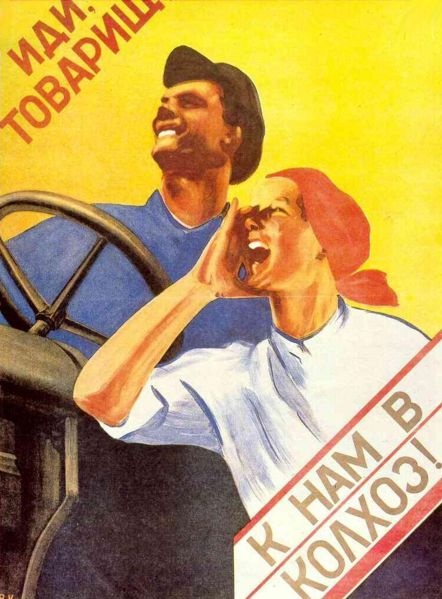How did Stalin transform agriculture, particularly with the transformation of private farms into collective farms?
1 Answer
I think that the idea of colletive farms was aimed at controlling and repress more than really improve agriculture.
Explanation:
The idea of Stalin was to establish collective farms (kolkhoz) where the land and tools were given by the state (produced by the factories) and where the farmers worked together in a sort of cooperative allocating part of the crop to the state (grain, vegetables, milk, animals or others).
The idea apparently is quite good because it promotes a kind of “Team Working” structure very efficient (in theory) and without waste of time or resources. Competitions, in the spirit of the “Socialist Enthusiasm”, were even introduced between farms to reach incredible rates of production (with the result of wearing out the tools and degrading the quality of the soil).
In reality it was a disaster: not only the majority of the farmers didn't like the idea of working in a cooperative but also didn't like to give part of the crop to the state. The part allocated to the state was frequently over calculated (to satisfy Stalin's expectations) and led to starvation and famine of the farmers that had to give sometimes the entire crop to the state!
Local administrators aiming at boosting their image with the great leader set impossible goals of production so that when the crops were obviously inferior, to maintain their promises, they simply took everything from the farmers with the use of violence and force.
On top of it, the central planners for the agricultural production seldom were experts in the field (more frequently loyal communists more than everything!) and due to the incredible extension of Russia and variety of conditions of the land or weather they frequently made terrible mistakes in planning this or that cultivation to be introduced.

[Come, join the Kolkhoz! An enthusiastic poster hiding a different reality]
The collective farm system in reality was more of a mean of controlling and repress the farmers as a social group (traditionally troublesome in Russia) by rounding them up in one structure (highly bureaucratized) where they worked more or less as slaves and that could be easily threatened (taking away the food) by the security forces or even the army.

